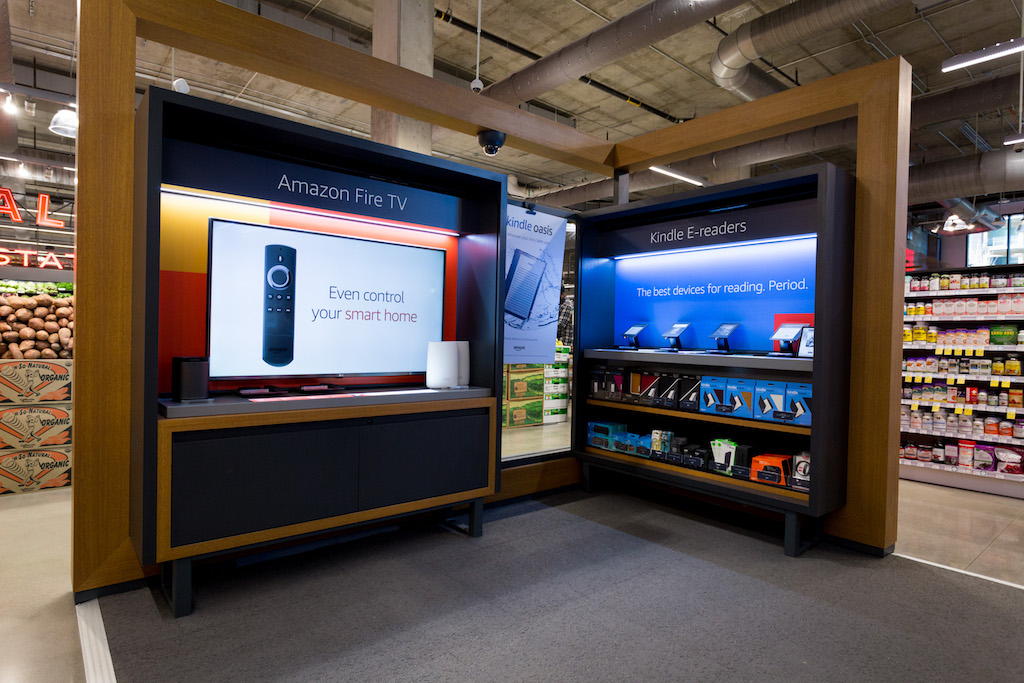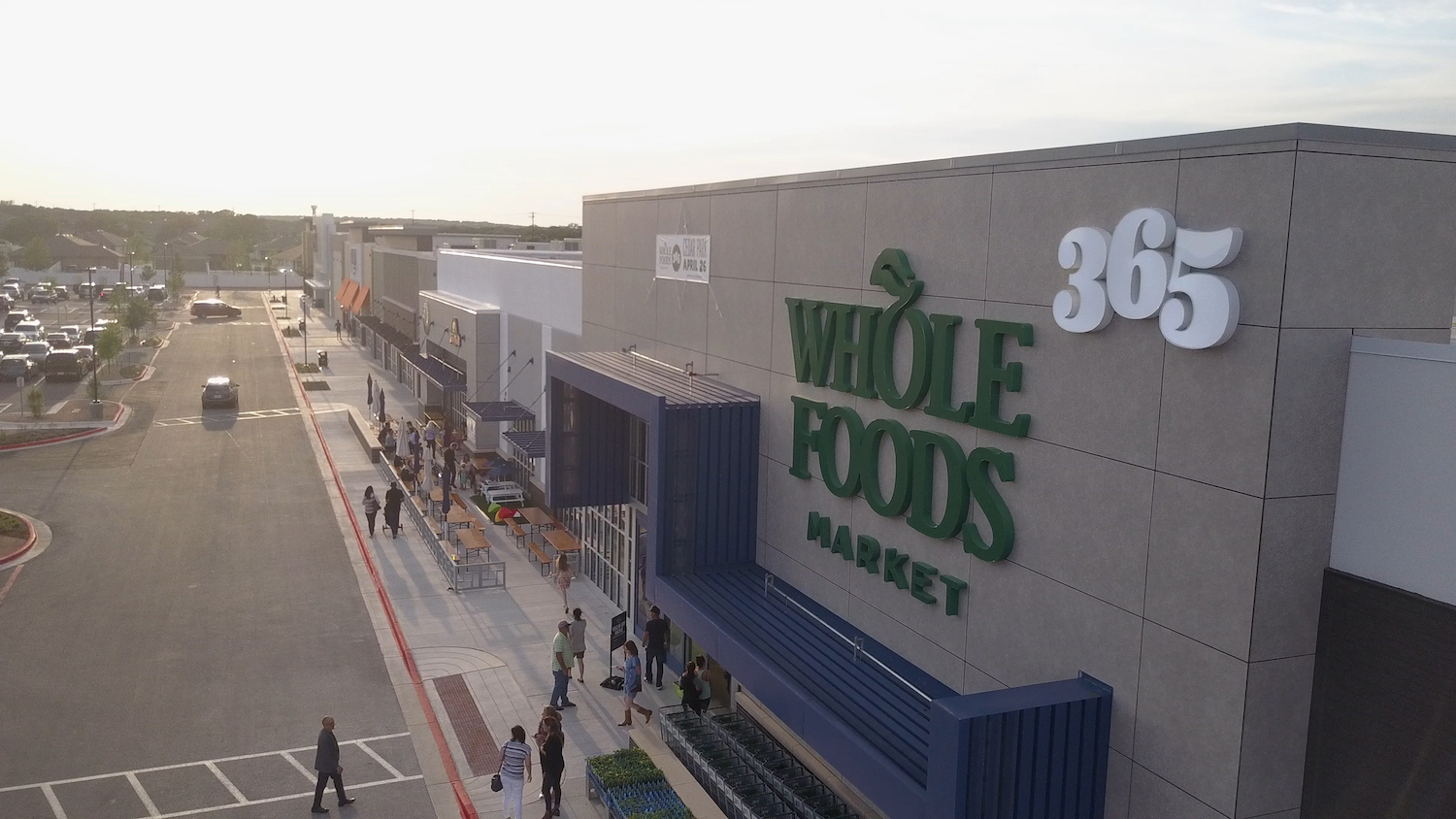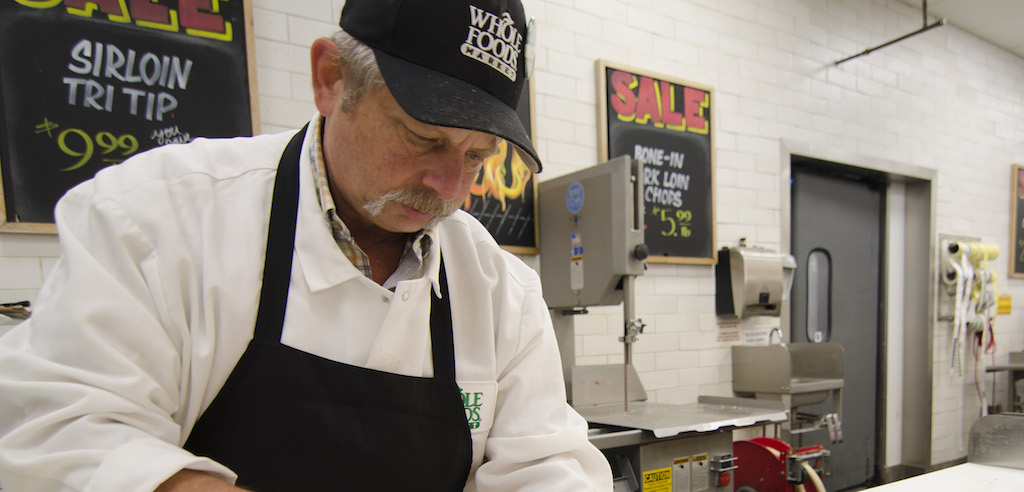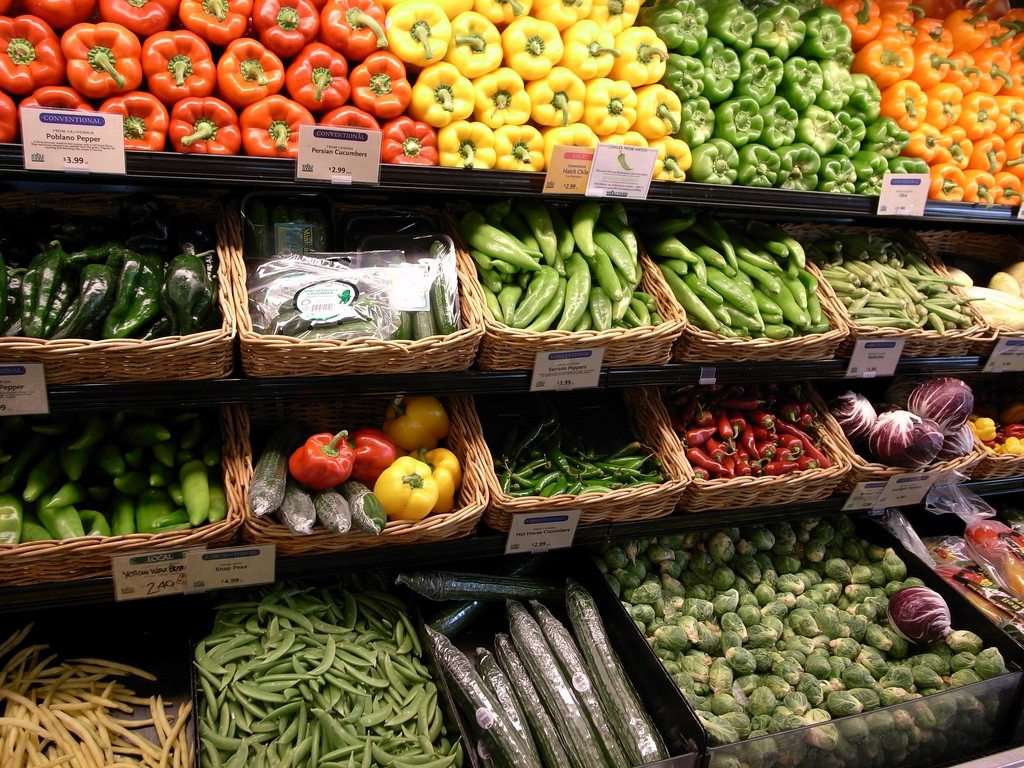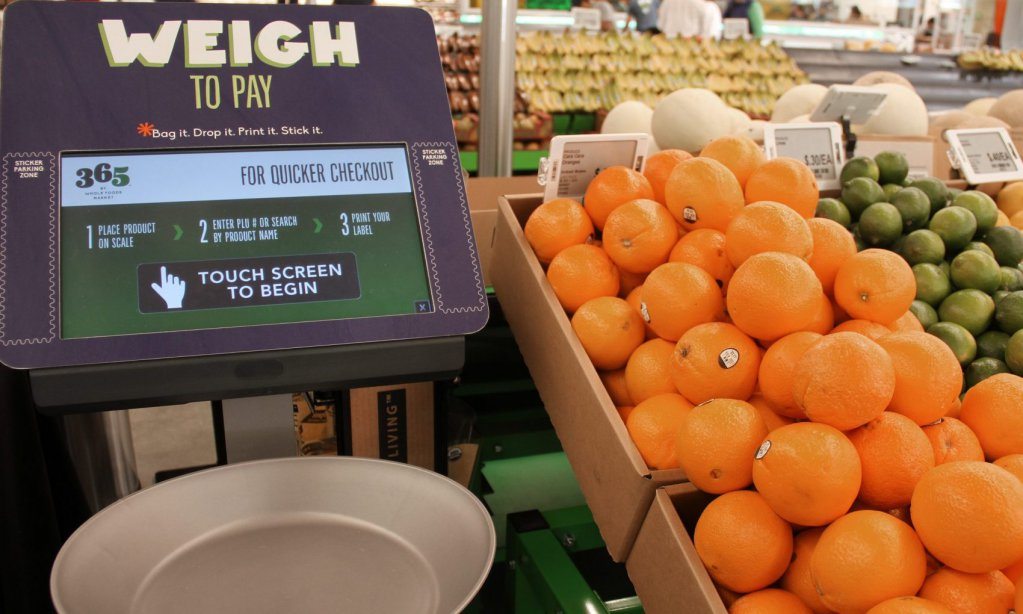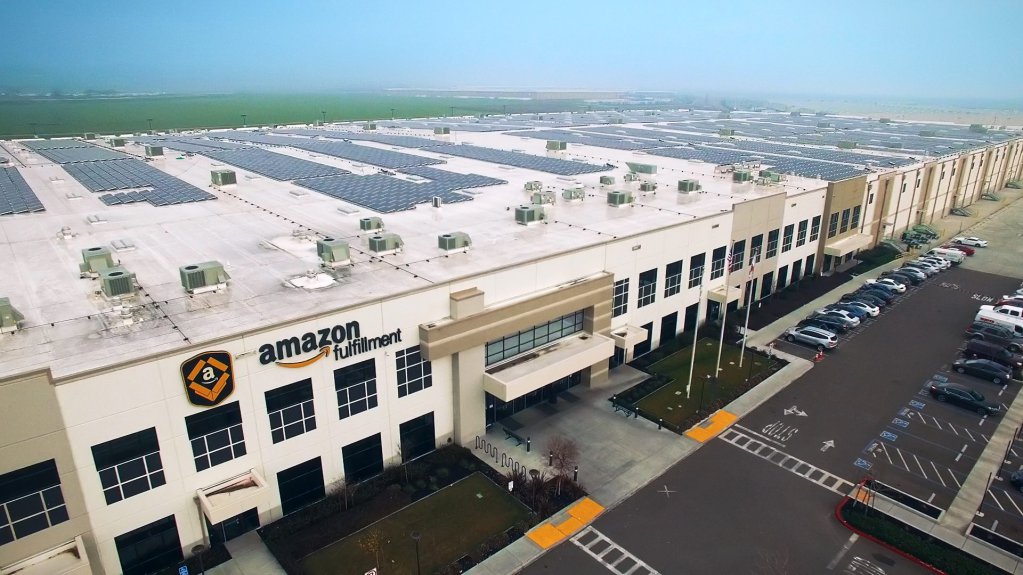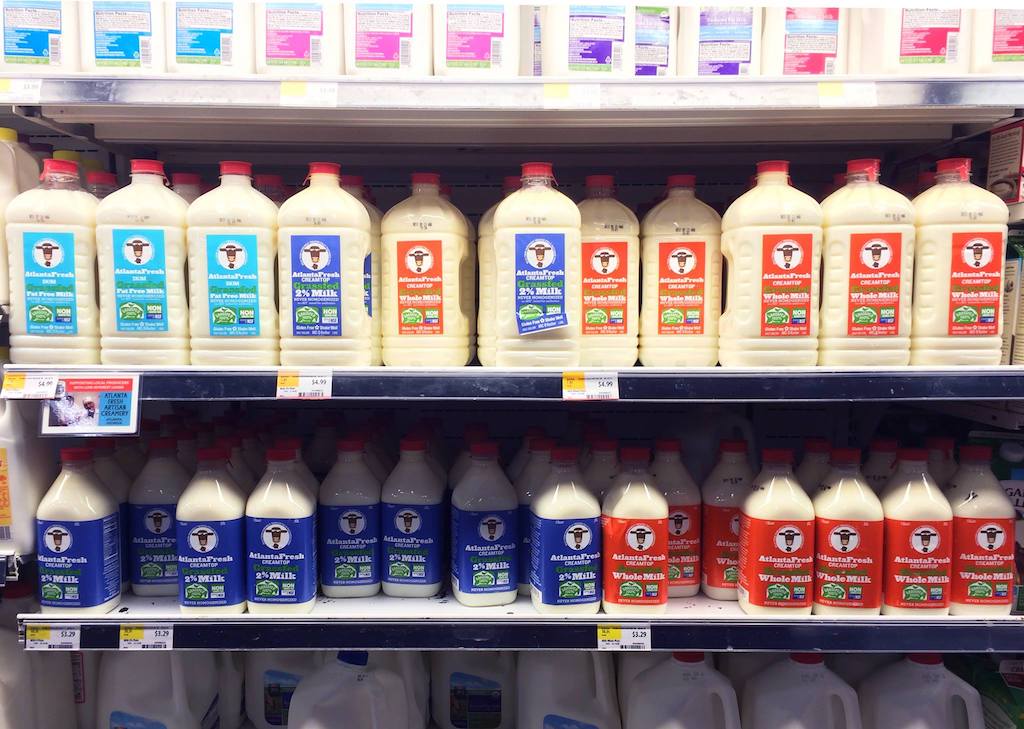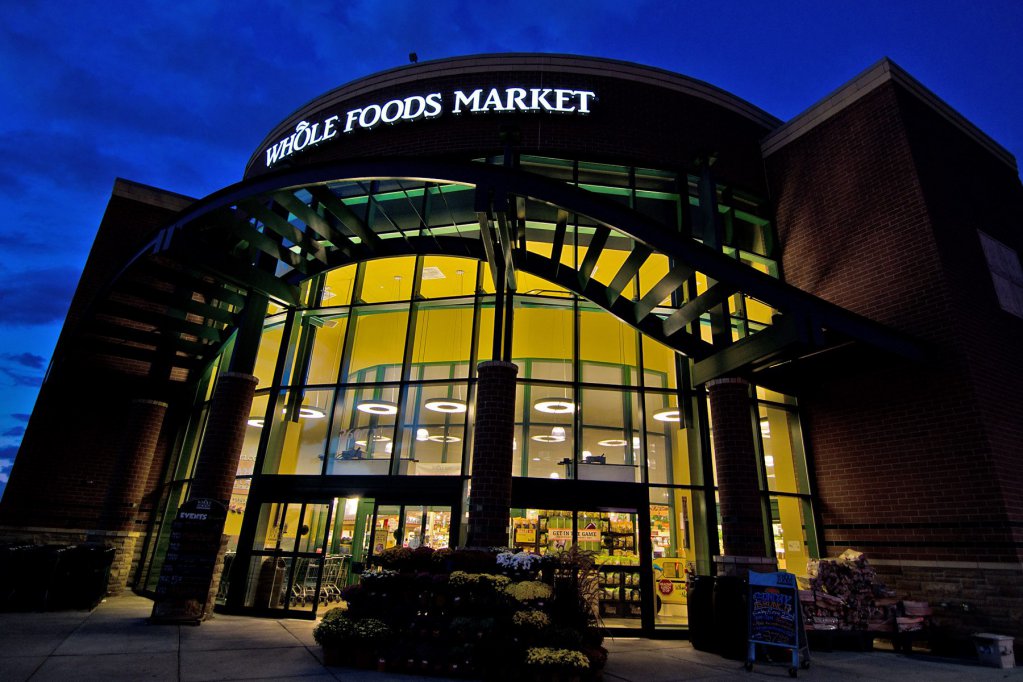
Georg Beyer / Whole Foods Market
Amazon became the second company ever to reach a trillion-dollar market value on Tuesday, quickly matching the historic milestone Apple reached last month. Together, the two tech companies command a vast amount of wealth, representing about 8 percent of the S&P 500’s overall value. But while the news is great for investors, it’s sure to elicit mixed feelings in everyone else.
On the one hand, let’s admit it: Amazon is an unequivocal American success story. As David Streitfeld points out in The New York Times, the company has pursued ambitious goals without catering to the short-term demands of the stock market, finding new ways to entice and delight shoppers in the process. Much of its enormous valuation is based on the perception that the company is playing a shrewd long game. And there’s been a sense for some time that, even if its retail business is losing billions now, Amazon will still find ways to own the future.
But the question is whether Amazon’s future is one we’re going to want to live in. Just days before the company joined the 13-figure club, Vermont’s Democratic Senator Bernie Sanders announced his plan to propose legislation—inspired by H. Claire Brown’s reporting on the high rates of participation in the Supplemental Nutrition Assistance Program (SNAP, formerly known as food stamps) among Amazon employees—that would compel the company to reduce its employees’ reliance on food stamps and pay its warehouse workers a fairer wage. “All over this country, many Amazon employees, who work for the wealthiest person on Earth, are paid wages so low they can’t make ends meet,” Sanders wrote in his statement. “That is absurd.”
Taken together, these developments highlight Amazon’s janus-faced public reputation: Where some see Amazon the innovator, others see Amazon the corporate tyrant. Which is part of what makes a pair of new studies so fascinating. The first, published by the online review site Yelp, suggests that, for some, Amazon has become the embodiment of a kind of virulent corporate evil—its very name is enough to freak out a vocal group of consumers. But the second suggests that it doesn’t really matter whether or not Amazon is winning the PR war. Loved or loathed, the company has found new ways to drive engagement at Whole Foods Market stores across the country, with a remarkable uptick in foot traffic since it took control of the grocery chain a year ago last week.
First, that Yelp study. According to an analysis by a pair of Yelp data scientists, reviews of Whole Foods Market that also mention Amazon have grown more negative over the past year. Since the acquisition, 20 percent of reviews on the site mention Amazon in some way, suggesting that the takeover has strongly shaped consumer perception of the grocer’s brand.
Those reviews are significantly more negative—a half-star lower than the company’s overall 3.2-star rating. The authors also noted another phenomenon: Many Yelpers were so put off by Amazon’s takeover that they updated reviews made before the acquisition. Those reviews were generally revised downward, again by an average of about half a star.
According to Yelp’s analysis, Whole Foods shoppers cited a wide variety of concerns having to do with Amazon. It quoted reviews that said the staff was less friendly post-takeover, and that the quality had gone down. For its part, Amazon insists its hasn’t changed Whole Foods’ purchasing, and a Barclays report that found ragged produce departments suggest any changes are due to demand for steeply discounted organics. Yelp’s own conclusion is that consumer attitudes toward Amazon as a corporate parent have colored shoppers’ experiences of the store. In its meta-analysis of Whole Foods reviews, Yelp found that certain words recurred more often in negative write-ups that mentioned Amazon. It’s a revealing list: “corporate,” “takeover,” and “acquisition” all appear (along with more puzzling words like “incident” and “shame”). But the top two words associated with a negative review paint a pretty clear picture: “Jeff” and “Bezos.”
It’s hard to say exactly how many Whole Foods shoppers have been put off by Amazon’s patronage. Yelp’s analysis doesn’t give hard data about its sample size, and Yelp users are already a somewhat self-selecting group. But that’s what makes the second study, from the market research firm Sense360, so useful. In a way, it doesn’t matter how much griping people are doing: Whatever Amazon has done differently with Whole Foods, it seems to be working.
According to Sense360’s study, based on the phone GPS data of 2.2 million Americans and a 1,000-person survey, Amazon has found new ways to get Whole Foods shoppers in the door. Using location data, the firm found that Americans are increasingly visiting Whole Foods stores: Among all grocery stores nationwide, the chain’s share of visits grew from 4.8 percent a year ago to 6 percent today. That uptick means that Whole Foods is peeling away shoppers from other grocery chains, especially Safeway, Sam’s Club, and Walmart. Trader Joe’s, though, was the most affected. Sense360 found that shoppers chose Whole Foods over Trader Joe’s 3.5 percent more often than they did last year.
What accounts for the difference? The answer is unsurprising: Amazon’s attempts to tie Whole Foods into its Prime subscription have been successful. The e-commerce giant has continued to use Whole Foods as a depot for goods ordered online, and offer special—if controversial—discounts to Prime members, leveraging its whopping, 100-million-person subscriber base to get them into stores. As it turns out, there are some brilliant synergies between the two brands. “Whole Foods shoppers are 25 percent more likely to use Amazon than the ‘average’ person and 50 percent more likely to be a Prime member,” according to Sense360. “Moreover, when it comes to buying behavior, Amazon Prime members are 27 percent more likely to visit Whole Foods than non-Amazon customers.”
In other words, it doesn’t matter how many people are bellyaching on Yelp. Amazon has found a formula that gets people to buy more, even if some of us are still uneasy about it. After all, isn’t that what Amazon has always done best—find ways to get us on board, despite our reservations? To make things so convenient, so cheap, so irresistibly easy that we simply can’t say no, even if we think we might be better off refusing?
“Amazon is the Jay Gatsby of American companies, believing that tomorrow it will run faster, stretch its arms out farther, fulfill the desires of consumers in ways that no other business possibly could,” Streitfeld writes, in the Times. “You will live in Amazon’s world, it says, and you will like it.”




